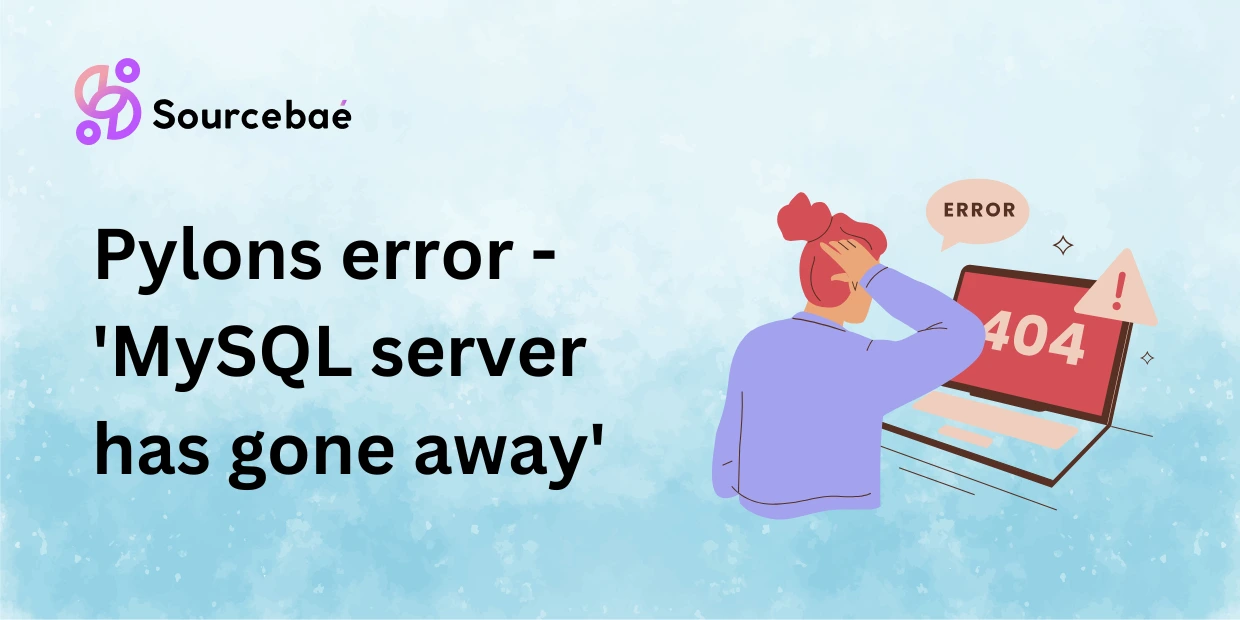Pylons is a powerful, lightweight, and highly-flexible Python web development framework used by countless developers worldwide. Like any web application framework, Pylons relies heavily on databases for storing application data. Among databases, MySQL remains one of the most popular backends due to its performance, reliability, and ease-of-use. However, users often encounter an infamous MySQL error: “MySQL server has gone away”.
As a developer working on a Pylons application, encountering database issues can be frustrating and disruptive. In this article, we will delve into diagnosing, troubleshooting, and eliminating the “MySQL server has gone away” error in your Pylons-based applications. Let’s dive in!
What Exactly is the “MySQL Server Has Gone Away” Error?
The “MySQL server has gone away” error typically occurs when MySQL applications maintain an invalid or timed-out connection. Simply stated, the error means Pylons attempts to utilize a database connection that MySQL no longer recognizes as valid.
In a Pylons application using SQLAlchemy, the error often manifests in logs similar to:
sqlalchemy.exc.OperationalError: (OperationalError) (2006, 'MySQL server has gone away')
This error could appear during application startup, database requests, form submissions, or even in scheduled background tasks. Understanding its root causes is key to resolving it.
Common Causes of the Error
Below are the most common scenarios triggering the “MySQL server has gone away” issue with MySQL-powered Pylons applications:
1. Long-running Database Queries or Processes:
MySQL features timeouts such as wait_timeout and interactive_timeout. If your queries run extensively over this threshold, MySQL disconnects the idle connection, prompting the error.
2. Idle Connections:
Similar to the above cause, if the established database connection remains inactive for prolonged periods, MySQL terminates the connection, considering it stale.
3. Large Data Packets:
MySQL limits data packet size. Queries attempting to insert, update or select large data chunks exceeding the configured max_allowed_packet cause disconnection and the error.
4. Improper Configuration:
Incorrectly set MySQL parameters or Pylons configuration settings frequently lead to this disconnection issue.
5. MySQL Server Restarts or Network Issues:
Occasional database server restarts, hardware or network latency interruptions will cut off active connections, generating the “MySQL server has gone away” error.
How to Diagnose the Issue
Follow these simple yet effective steps to accurately diagnose the root cause:
- Check MySQL Logs:
Inspect database logs for specific timeout or disconnection occurrences. - Analyze Error Frequency and Patterns:
Review application logs and records to pinpoint timing patterns (e.g., during peak hours, heavy queries, or idle intervals). - Connection Testing:
Use command-line tools likemysqladmin pingor execute a simple query in the MySQL shell. In Pylons/SQLAlchemy code, simple connection tests provide immediate feedback.
Step-by-step Solutions and Workarounds
To resolve the “MySQL server has gone away” error and stabilize your Pylons application, try these actionable solutions:
1. Increasing MySQL Timeout Variables:
Modify your MySQL server configuration (my.cnf or my.ini) and increase essential parameters:
[mysqld]
wait_timeout = 28800
interactive_timeout = 28800
max_allowed_packet = 64M
Restart MySQL after applying these settings to take effect.
2. Adjusting Connection Pool Settings (Pylons & SQLAlchemy):
SQLAlchemy (commonly utilized with Pylons) offers connection pool configurations. Adjust these settings, such as connection recycling and pool size:
engine = create_engine('mysql+pymysql://user:password@host/dbname',
pool_size=20,
pool_recycle=3600) # recycle connections after 1 hour
This ensures idle connections are refreshed periodically.
3. Managing Large Queries Efficiently:
Optimize your queries by breaking down bulky SQL scripts or ORM calls into smaller batches. Employ pagination and chunk techniques to streamline data retrieval.
4. Handling Idle Connections Gracefully:
In applications with infrequent database activity, implement a simple keep-alive mechanism or use connection recycling in SQLAlchemy as shown above.
5. Update Your Database Drivers:
Many connection stability issues arise from outdated or incompatible database drivers. Regularly update your Python MySQL drivers (PyMySQL, mysqlclient or MySQL Connector/Python) to their latest stable releases:
pip install --upgrade pymysql mysqlclient
Preventative Measures
Proactively implementing preventive solutions helps eliminate MySQL database issues in the future. Here are some best practices:
- Routine monitoring of database performance and connectivity.
- Regularly audit query performance using tools like MySQL workbench or New Relic.
- Regularly review ORM behavior and optimize database interactions.
- Keep your database, Pylons, and Python libraries updated positively impacting your infrastructure efficiency.
Frequently Asked Questions (FAQs)
Q: How do I quickly verify my MySQL “wait_timeout” setting?
Execute this SQL command in your MySQL console or query editor:
SHOW VARIABLES LIKE 'wait_timeout';
Q: Will raising the max_allowed_packet setting slow down my database?
Increasing moderately (e.g., 32M or 64M) rarely impacts database performance significantly. However, excessively large values should be avoided if not necessary.
Q: Is this “MySQL server has gone away” issue specific only to Pylons?
No, this is a common database error that occurs across various application frameworks interacting with MySQL databases. It is not exclusive to Pylons.
Q: Should I repeatedly restart my application when facing this issue?
Repetitive restarting is not advisable. Aim for permanent optimizations and config adjustments rather than temporary workarounds like frequent restarts.
Q: Which tools can help monitor Database Connections?
Use database management tools like MySQL Workbench, third-party monitoring solutions (DataDog, New Relic), or SQLAlchemy built-in logging and monitoring functionalities.
Troubleshooting Checklist:
To rapidly diagnose when “MySQL server has gone away”, bookmark this quick checklist:
- Check MySQL logs regularly.
- Adjust timeout and packet size configurations.
- Evaluate connection pooling/persistence settings.
- Inspect network reliability and hardware performance.
- Upgrade obsolete database drivers and ORM libraries.
- Implement connection recycling to gracefully manage idle connections.
- Deploy monitoring and alerting solutions to preemptively catch issues.
Conclusion:
Effectively addressing the “MySQL server has gone away” error ensures robust performance and user experience in your Pylons-powered application. Diagnosing the cause proactively, adjusting timeout variables suitably, fine-tuning SQLAlchemy connection pools, and routinely updating drivers are proven methods to mitigate this persistent issue.
Bookmark this guide or share it with teammates to save precious hours spent debugging database errors. Proactively monitoring, regular performance scaling, and responsibly configured applications are key elements to a successful deployment.
Let’s Hear Your Experiences!
Have you encountered the “MySQL server has gone away” error with your Pylons application? Share your experiences, tips, or solutions in the comments section! Don’t forget to subscribe to our newsletter and stay updated with our latest troubleshooting articles.
Keywords & Tags: Pylons, MySQL troubleshooting, MySQL errors, database errors, SQLAlchemy, Python web frameworks, “MySQL server has gone away” solutions






